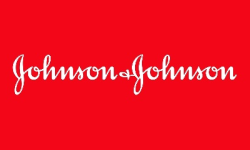
Global Pea Starch Market by Type (Feed, Food), by Function (Gelling, Film Forming, Texturizing, Binding & Thickening) and Region (North America, Latin America, Europe, Asia Pacific and Middle East & Africa), Forecast To 2028
Summary of the Report
Global pea starch market was valued at USD 54.6 millions in 2018. It is expected to grow at a revenue-based CAGR (or 5.8%) during the forecast period. This growth has been mainly driven by increased demand for pea fiber, protein and surplus pea starch. It is one of the most popular starch-based ingredients in food and feed industries. It has many nutritional benefits, and can be used to prepare lactose-free or gluten-free allergen-free products. Because of its organic origin, pea starch helps to provide clean labels on processed foods such as baked goods and meats.
Peas can be grown in nearly all countries around the globe. Canada is a major exporter and manufacturer of field peas. More than half of Canada's total pea production is exported as seed, without any further processing.
Field peas are mainly used in Europe and North America as feed ingredients. Whole seeds are ground and mixed with ground cereal seeds to make feeds. Field peas are also used in South America and Asia for human consumption. At present, the global field pea production is much smaller, with less of it being processed into starch and fiber as well as protein fractions.
Pea starch is made from yellow peas. It is the most commonly used ingredient in field peas. It can also be used to thicken many agri-food applications such as sauces, creams and meats as well as pasta types.
Type Insights
The pea starch market is segmented by type into food, feed and industrial. The product's higher use as an ingredient for human consumption is expected to drive the food grade segment to a significant increase over the forecast period. It also ensures stability in the processing of food products.
The growth in industrial grade type is expected to be nearly 6% over the forecast period. This is due to increased use of pea starch as a glue and stiffening agent. The segment's growth is expected to be driven by the increasing demand for industrial applications.
The segment will grow quickly due to recent expansions in cosmetics and the growing popularity of starch-based adhesives within the packaging industry. Pea starch, which is renewable and can biodegrade in the right conditions, is an excellent source of bioplastic.
Function Insights
The market can be divided into texturizing and binding and thickening as well as film-forming. Due to its high accessibility and widespread use in food products and animal feeds, the gelling function dominated the market in 2018.
As a gelling agent, pea starch increases the viscosity without affecting other properties. Because of its fibrous content and gluten-free qualities, it is widely used in food and beverage industries, particularly in sauces, soups, gravies and desserts.
Pea starch can be considered gluten-free and non-GMO. Because it is high in amylose, it is unique from other native starches. It can form a gel in water with a lower amount than other varieties. It is a good ingredient for foods that have a less elastic texture, such as gums, meats and extruded cereals.
End-use Insights
The market can be divided by application into the following segments: food and beverage; animal feed; paper; pharmaceuticals; and textiles. Due to the large use of pea starch for snack products, the food and beverage market is expected to be the dominant segment. It is used as a fat substitute ingredient in nutritional foods and convenience foods. These consumables also contain significant amounts of fiber and protein.
The rising demand for convenience foods and processed foods products around the world, particularly in Asia Pacific, is expected to lead to an increase in pea starch consumption within the food and beverage sector over the forecast period. This region is also experiencing high growth due to the expansion of paper and pharmaceutical industries. It is used in papermaking as an additive to improve drainage and retention. It is also used in surface treatment applications within the paper industry.
Regional Insights
Asia Pacific held a significant market share in 2018, and will continue to grow at the fastest CAGR during the forecast period. This region has played a significant role in the rising demand for convenience food products such as soups, sauces, confectionery, and sauces. The main factors driving regional market growth are a large consumer base, increased use of pea starches in processed foods, and a growing demand for native stars.
North America will be the largest market share in 2025 due to its position as the largest exporter and manufacturer of pea starch around the world. Due to increasing demand for adhesives and increased consumption of processed foods, the region will continue to be a major market player.
The significant increase in Mexican food processing output, due to increasing imports of machinery, will drive growth in the baked goods, and processed meats industries segments. This will result in strong demand for pea starch texturizing agents in baked products and meat products during the forecast period.
Market Share Insights & Key Companies
Companies are engaging in aggressive market activities, including capital extension, strategic alliances, regular mergers and acquisitions. The major players are focused on increasing their market share and productivity through technological innovation.
The market is dominated by Cargill Inc., Roquette, Emsland Group, American Key Products and Sanstar Bio-Polymers. Vestkorn and Parrheim Foods are some of the key players. Due to the presence of many market players, there has been intense competition. Vendors have taken advantage of the mergers and acquisitions to withstand intense competition.
Pea Starch Market Report Scope
The Report Covers Certain Segments
This report forecasts volume growth and revenue at the global, regional and country level. It also provides analysis of industry trends for each sub-segment from 2014-2025. Grand View Research has divided the global peastarch market report by type, function, end use, and region.
-
Type Outlook (Volume and Tons; Revenue USD Million, 2014-2025)
-
Feed
-
Food
-
Industrial
-
-
Function Outlook (Volume and Tons; Revenue USD Millions, 2014-2025)
-
Binding and Thickening
-
Gelling
-
Texturizing
-
Film Making
-
Other
-
-
End-use Outlook (Volume and Tons; Revenue USD Millions, 2014-2025)
-
Food & Beverage
-
Animal Feed
-
Paper
-
Pharmaceuticals
-
Textiles
-
-
Regional Outlook (Volume and Tons; Revenue USD Millions, 2014-2025)
-
North America
-
The U.S.
-
Canada
-
Mexico
-
-
Europe
-
Germany
-
U.K.
-
France
-
-
Asia Pacific
-
China
-
India
-
Japan
-
-
Central & South America
-
Brazil
-
-
Middle East & Africa
-
UAE
-
-
These are the most frequently asked questions about this report
What is the size of the pea starch industry?b. Global pea starch market was valued at USD 57.7 millions in 2019, and is projected to grow to USD 61 million by 2020.
What is the growth rate of the pea starch industry?b. Global pea starch markets are expected to grow at a compound annual rate of 5.8% between 2019 and 2025, reaching USD 80.8 million in 2025.
Which pea starch segment had the largest market share?b. With a 40.5% share in 2019, North America was the dominant pea starch market. This can be attributed to the growing consumption of processed foods and the increasing demand for adhesives in a wide range of industrial applications.
What are the major players in the pea starch marketb. Some of the key players in the pea starch market are Roquette, Emsland Group, American Key Products, Roquette; Emsland Group and Vestkorn.
What are the driving factors for the pea starch industry?b. Its nutritional benefits, as well as its use in the preparation of lactose-free or gluten-free allergen free solutions are key factors driving market growth.
Up Market Research published a new report titled “Pea Starch Market research report which is segmented by Type (Feed, Food), by Function (Gelling, Film Forming, Texturizing, Binding & Thickening), By Players/Companies vendors have been capitalizing primarily on the benefits of mergers and acquisitions, Cargill Inc; Roquette; Emsland Group; American Key Products; Sanstar Bio-Polymers; Vestkorn; and Parrheim Foods The presence of several market players has led to intense competition To withstand this”. As per the study the market is expected to grow at a CAGR of XX% in the forecast period.
| Report Attributes | Report Details |
| Report Title | Pea Starch Market Research Report |
| By Type | Feed, Food |
| By Function | Gelling, Film Forming, Texturizing, Binding & Thickening |
| By Companies | vendors have been capitalizing primarily on the benefits of mergers and acquisitions, Cargill Inc; Roquette; Emsland Group; American Key Products; Sanstar Bio-Polymers; Vestkorn; and Parrheim Foods The presence of several market players has led to intense competition To withstand this |
| Regions Covered | North America, Europe, APAC, Latin America, MEA |
| Base Year | 2020 |
| Historical Year | 2018 to 2019 (Data from 2010 can be provided as per availability) |
| Forecast Year | 2028 |
| Number of Pages | 219 |
| Number of Tables & Figures | 154 |
| Customization Available | Yes, the report can be customized as per your need. |
The report covers comprehensive data on emerging trends, market drivers, growth opportunities, and restraints that can change the market dynamics of the industry. It provides an in-depth analysis of the market segments which include products, applications, and competitor analysis.

Global Pea Starch Market Report Segments:
The market is segmented by Type (Feed, Food), by Function (Gelling, Film Forming, Texturizing, Binding & Thickening).
Pea Starch Market research report delivers a close watch on leading competitors with strategic analysis, micro and macro market trend and scenarios, pricing analysis and a holistic overview of the market situations in the forecast period. It is a professional and a detailed report focusing on primary and secondary drivers, market share, leading segments and geographical analysis. Further, key players, major collaborations, merger & acquisitions along with trending innovation and business policies are reviewed in the report.
Key Benefits for Industry Participants & Stakeholders:
- Industry drivers, restraints, and opportunities covered in the study
- Neutral perspective on the market performance
- Recent industry trends and developments
- Competitive landscape & strategies of key players
- Potential & niche segments and regions exhibiting promising growth covered
- Historical, current, and projected market size, in terms of value
- In-depth analysis of the Pea Starch Market
Overview of the regional outlook of the Pea Starch Market:
Based on region, the market is segmented into North America, Europe, Asia Pacific, Latin America and Middle East & Africa (MEA). North America region is further bifurcated into countries such as U.S., and Canada. The Europe region is further categorized into U.K., France, Germany, Italy, Spain, Russia, and Rest of Europe. Asia Pacific is further segmented into China, Japan, South Korea, India, Australia, South East Asia, and Rest of Asia Pacific. Latin America region is further segmented into Brazil, Mexico, and Rest of Latin America, and the MEA region is further divided into GCC, Turkey, South Africa, and Rest of MEA.

Highlights of The Pea Starch Market Report:
- The market structure and projections for the coming years.
- Drivers, restraints, opportunities, and current trends of Pea Starch Market.
- Historical data and forecast.
- Estimations for the forecast period 2028.
- Developments and trends in the market.
1. Feed
2. Food
7. By Function:1. Gelling
2. Film Forming
3. Texturizing
4. Binding & Thickening
- Market scenario by region, sub-region, and country.
- Market share of the market players, company profiles, product specifications, SWOT analysis, and competitive landscape.
- Analysis regarding upstream raw materials, downstream demand, and current market dynamics.
- Government Policies, Macro & Micro economic factors are also included in the report.
We have studied the Pea Starch Market in 360 degrees via. both primary & secondary research methodologies. This helped us in building an understanding of the current market dynamics, supply-demand gap, pricing trends, product preferences, consumer patterns & so on. The findings were further validated through primary research with industry experts & opinion leaders across countries. The data is further compiled & validated through various market estimation & data validation methodologies. Further, we also have our in-house data forecasting model to predict market growth up to 2028.
How you may use our products:
- Correctly Positioning New Products
- Market Entry Strategies
- Business Expansion Strategies
- Consumer Insights
- Understanding Competition Scenario
- Product & Brand Management
- Channel & Customer Management
- Identifying Appropriate Advertising Appeals

Reasons to Purchase the Pea Starch Market Report:
- The report includes a plethora of information such as market dynamics scenario and opportunities during the forecast period
- Segments and sub-segments include quantitative, qualitative, value (USD Million,) and volume (Units Million) data.
- Regional, sub-regional, and country level data includes the demand and supply forces along with their influence on the market.
- The competitive landscape comprises share of key players, new developments, and strategies in the last three years.
- Comprehensive companies offering products, relevant financial information, recent developments, SWOT analysis, and strategies by these players.
Chapter 2 Assumptions and Acronyms Used
Chapter 3 Research Methodology
Chapter 4 Pea Starch Market Overview
4.1 Introduction
4.1.1 Market Taxonomy
4.1.2 Market Definition
4.1.3 Macro-Economic Factors Impacting the Market Growth
4.2 Pea Starch Market Dynamics
4.2.1 Market Drivers
4.2.2 Market Restraints
4.2.3 Market Opportunity
4.3 Pea Starch Market - Supply Chain Analysis
4.3.1 List of Key Suppliers
4.3.2 List of Key Distributors
4.3.3 List of Key Consumers
4.4 Key Forces Shaping the Pea Starch Market
4.4.1 Bargaining Power of Suppliers
4.4.2 Bargaining Power of Buyers
4.4.3 Threat of Substitution
4.4.4 Threat of New Entrants
4.4.5 Competitive Rivalry
4.5 Global Pea Starch Market Size & Forecast, 2018-2028
4.5.1 Pea Starch Market Size and Y-o-Y Growth
4.5.2 Pea Starch Market Absolute $ Opportunity
Chapter 5 Global Pea Starch Market Analysis and Forecast by Type
5.1 Introduction
5.1.1 Key Market Trends & Growth Opportunities by Type
5.1.2 Basis Point Share (BPS) Analysis by Type
5.1.3 Absolute $ Opportunity Assessment by Type
5.2 Pea Starch Market Size Forecast by Type
5.2.1 Feed
5.2.2 Food
5.3 Market Attractiveness Analysis by Type
Chapter 6 Global Pea Starch Market Analysis and Forecast by Function
6.1 Introduction
6.1.1 Key Market Trends & Growth Opportunities by Function
6.1.2 Basis Point Share (BPS) Analysis by Function
6.1.3 Absolute $ Opportunity Assessment by Function
6.2 Pea Starch Market Size Forecast by Function
6.2.1 Gelling
6.2.2 Film Forming
6.2.3 Texturizing
6.2.4 Binding & Thickening
6.3 Market Attractiveness Analysis by Function
Chapter 7 Global Pea Starch Market Analysis and Forecast by Region
7.1 Introduction
7.1.1 Key Market Trends & Growth Opportunities by Region
7.1.2 Basis Point Share (BPS) Analysis by Region
7.1.3 Absolute $ Opportunity Assessment by Region
7.2 Pea Starch Market Size Forecast by Region
7.2.1 North America
7.2.2 Europe
7.2.3 Asia Pacific
7.2.4 Latin America
7.2.5 Middle East & Africa (MEA)
7.3 Market Attractiveness Analysis by Region
Chapter 8 Coronavirus Disease (COVID-19) Impact
8.1 Introduction
8.2 Current & Future Impact Analysis
8.3 Economic Impact Analysis
8.4 Government Policies
8.5 Investment Scenario
Chapter 9 North America Pea Starch Analysis and Forecast
9.1 Introduction
9.2 North America Pea Starch Market Size Forecast by Country
9.2.1 U.S.
9.2.2 Canada
9.3 Basis Point Share (BPS) Analysis by Country
9.4 Absolute $ Opportunity Assessment by Country
9.5 Market Attractiveness Analysis by Country
9.6 North America Pea Starch Market Size Forecast by Type
9.6.1 Feed
9.6.2 Food
9.7 Basis Point Share (BPS) Analysis by Type
9.8 Absolute $ Opportunity Assessment by Type
9.9 Market Attractiveness Analysis by Type
9.10 North America Pea Starch Market Size Forecast by Function
9.10.1 Gelling
9.10.2 Film Forming
9.10.3 Texturizing
9.10.4 Binding & Thickening
9.11 Basis Point Share (BPS) Analysis by Function
9.12 Absolute $ Opportunity Assessment by Function
9.13 Market Attractiveness Analysis by Function
Chapter 10 Europe Pea Starch Analysis and Forecast
10.1 Introduction
10.2 Europe Pea Starch Market Size Forecast by Country
10.2.1 Germany
10.2.2 France
10.2.3 Italy
10.2.4 U.K.
10.2.5 Spain
10.2.6 Russia
10.2.7 Rest of Europe
10.3 Basis Point Share (BPS) Analysis by Country
10.4 Absolute $ Opportunity Assessment by Country
10.5 Market Attractiveness Analysis by Country
10.6 Europe Pea Starch Market Size Forecast by Type
10.6.1 Feed
10.6.2 Food
10.7 Basis Point Share (BPS) Analysis by Type
10.8 Absolute $ Opportunity Assessment by Type
10.9 Market Attractiveness Analysis by Type
10.10 Europe Pea Starch Market Size Forecast by Function
10.10.1 Gelling
10.10.2 Film Forming
10.10.3 Texturizing
10.10.4 Binding & Thickening
10.11 Basis Point Share (BPS) Analysis by Function
10.12 Absolute $ Opportunity Assessment by Function
10.13 Market Attractiveness Analysis by Function
Chapter 11 Asia Pacific Pea Starch Analysis and Forecast
11.1 Introduction
11.2 Asia Pacific Pea Starch Market Size Forecast by Country
11.2.1 China
11.2.2 Japan
11.2.3 South Korea
11.2.4 India
11.2.5 Australia
11.2.6 South East Asia (SEA)
11.2.7 Rest of Asia Pacific (APAC)
11.3 Basis Point Share (BPS) Analysis by Country
11.4 Absolute $ Opportunity Assessment by Country
11.5 Market Attractiveness Analysis by Country
11.6 Asia Pacific Pea Starch Market Size Forecast by Type
11.6.1 Feed
11.6.2 Food
11.7 Basis Point Share (BPS) Analysis by Type
11.8 Absolute $ Opportunity Assessment by Type
11.9 Market Attractiveness Analysis by Type
11.10 Asia Pacific Pea Starch Market Size Forecast by Function
11.10.1 Gelling
11.10.2 Film Forming
11.10.3 Texturizing
11.10.4 Binding & Thickening
11.11 Basis Point Share (BPS) Analysis by Function
11.12 Absolute $ Opportunity Assessment by Function
11.13 Market Attractiveness Analysis by Function
Chapter 12 Latin America Pea Starch Analysis and Forecast
12.1 Introduction
12.2 Latin America Pea Starch Market Size Forecast by Country
12.2.1 Brazil
12.2.2 Mexico
12.2.3 Rest of Latin America (LATAM)
12.3 Basis Point Share (BPS) Analysis by Country
12.4 Absolute $ Opportunity Assessment by Country
12.5 Market Attractiveness Analysis by Country
12.6 Latin America Pea Starch Market Size Forecast by Type
12.6.1 Feed
12.6.2 Food
12.7 Basis Point Share (BPS) Analysis by Type
12.8 Absolute $ Opportunity Assessment by Type
12.9 Market Attractiveness Analysis by Type
12.10 Latin America Pea Starch Market Size Forecast by Function
12.10.1 Gelling
12.10.2 Film Forming
12.10.3 Texturizing
12.10.4 Binding & Thickening
12.11 Basis Point Share (BPS) Analysis by Function
12.12 Absolute $ Opportunity Assessment by Function
12.13 Market Attractiveness Analysis by Function
Chapter 13 Middle East & Africa (MEA) Pea Starch Analysis and Forecast
13.1 Introduction
13.2 Middle East & Africa (MEA) Pea Starch Market Size Forecast by Country
13.2.1 Saudi Arabia
13.2.2 South Africa
13.2.3 UAE
13.2.4 Rest of Middle East & Africa (MEA)
13.3 Basis Point Share (BPS) Analysis by Country
13.4 Absolute $ Opportunity Assessment by Country
13.5 Market Attractiveness Analysis by Country
13.6 Middle East & Africa (MEA) Pea Starch Market Size Forecast by Type
13.6.1 Feed
13.6.2 Food
13.7 Basis Point Share (BPS) Analysis by Type
13.8 Absolute $ Opportunity Assessment by Type
13.9 Market Attractiveness Analysis by Type
13.10 Middle East & Africa (MEA) Pea Starch Market Size Forecast by Function
13.10.1 Gelling
13.10.2 Film Forming
13.10.3 Texturizing
13.10.4 Binding & Thickening
13.11 Basis Point Share (BPS) Analysis by Function
13.12 Absolute $ Opportunity Assessment by Function
13.13 Market Attractiveness Analysis by Function
Chapter 14 Competition Landscape
14.1 Pea Starch Market: Competitive Dashboard
14.2 Global Pea Starch Market: Market Share Analysis, 2019
14.3 Company Profiles (Details – Overview, Financials, Developments, Strategy)
14.3.1 vendors have been capitalizing primarily on the benefits of mergers and acquisitions
14.3.2 Cargill Inc; Roquette; Emsland Group; American Key Products; Sanstar Bio-Polymers; Vestkorn; and Parrheim Foods The presence of several market players has led to intense competition To withstand this
The global Pea Starch market has been segmented based on
By Type
- Feed
- Food
- Gelling
- Film Forming
- Texturizing
- Binding & Thickening
- Asia Pacific
- North America
- Latin America
- Europe
- Middle East & Africa
- vendors have been capitalizing primarily on the benefits of mergers and acquisitions
- Cargill Inc; Roquette; Emsland Group; American Key Products; Sanstar Bio-Polymers; Vestkorn; and Parrheim Foods The presence of several market players has led to intense competition To withstand this
Related Reports
Some other reports from this category!



















